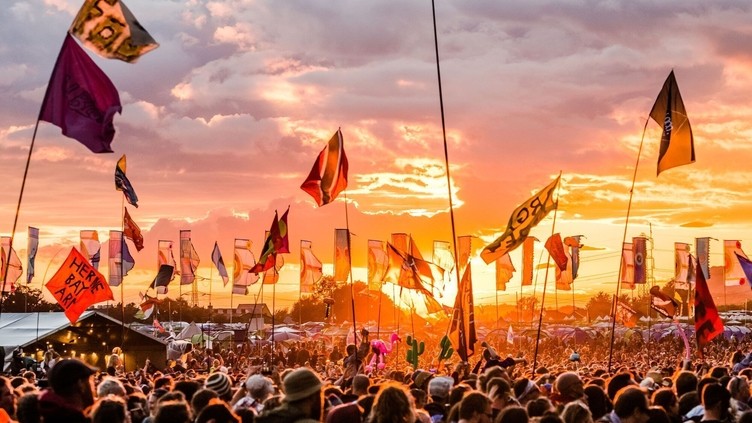For independent artists, the summer festival season offers a golden opportunity to expand their audience, network with industry peers, and bolster their brand. With large crowds and a vibrant atmosphere, festivals can serve as a vital launch pad for a flourishing career in the music industry which is becoming increasingly tougher to navigate, especially for working-class artists who can’t financially undertake a full tour due to increased costs attached to taking your music on the road.
It is crucial to remember that when festival bookers and artistic directors are filling up the bill after the headliners have been booked, they will search for up-and-coming artists who are taking a proactive approach to promoting their sound.
In this article, we will explore strategic approaches independent artists can adopt to exhibit their willingness to take their careers to the next level and maximise their presence and impact during the pivotal summer months.
How to Make the Most of the Music Festival Season
-
Choosing the Right Festivals
Research Thoroughly: Focus on playing the festivals that align with your musical genre and audience. Consider the festival’s history, its previous line-ups, and the type of audience it attracts when applying for and accepting festival slots.
Application Strategy: Prepare a compelling application with a strong bio, clear photos, and high-quality recordings. Tailor your applications to highlight why you are a good fit specifically for each festival. For larger festivals, talent booking happens in the Autumn, and the line-ups are completed by the early spring. However, for smaller festivals, you may be able to secure a slot months ahead of the event.
-
Preparation for Performance
Setlist Crafting: Design a setlist that showcases your best work and fits the festival vibe. Include a mix of your most popular tracks which always go down well live and your new material to put momentum behind your most recent releases. If the majority of the crowd isn’t likely to have heard you before, covering a popular song which works with your style is a great way to increase audience engagement and make your performance memorable.
Stage Presence: Invest time in rehearsing your performance, focusing on engaging with the audience and making your show as immersive as possible. Record your rehearsals and watch them back to see if there is any room for improvement. Consider visual elements like stage design and attire that complement your music style and keep in mind that many of the biggest artists from across the decades have had a stage persona to step into while on stage.
Technical & Logistical Readiness: Ensure your equipment is in top shape and you have backups or spares, should anything go wrong. Familiarise yourself with the stage layout and technical setups beforehand; most festivals will send you the stage specs for you to brush up on. As soon as you are booked on the bill, don’t hang around waiting to arrange transport; as festival season approaches, it becomes increasingly harder to book vans or any other transport you will need to attend the festival.
-
Marketing Before the Event
Social Media Engagement: Utilise social media platforms, mailing lists and your own website to announce your festival appearances. Create event pages, engage with fans through posts and stories, and use festival-specific hashtags. Never assume that it is solely the festival’s responsibility to promote your performance!
Press Kits and Media Outreach: Prepare press kits and reach out to local media and bloggers covering the festival. An interview or feature can increase visibility before the event.
-
Networking at the Festival
Building Connections: While you are at the festival, take the opportunity to network with fellow artists, festival organisers, and industry professionals. Have your business cards, promo copies of your work and a digital portfolio ready.
Attend Workshops and Panels: Many festivals offer workshops and panel discussions. Participate in these to learn and connect with speakers and attendees. Festivals don’t just give you your allotted stage time to make an impression; if you take every opportunity to create and strengthen your connections, you’ll have a better chance of walking away from the event after putting ample traction behind your career. Remember, it isn’t. just what you know, it’s who you know!
Follow-up: After the festival, reach out to the contacts you made with a thank you message, and express your interest in future collaborations or events.
-
Leveraging Festival Success Post-Event
Fan Engagement: Share your festival experiences through blog posts, videos, and social media updates. Engage with your existing fans and fans gained by your festival set by sharing behind-the-scenes content and highlights from your performance.
Media and Reviews: Collect any media mentions and reviews and share these on your platforms to build credibility. If you share your reviews, interviews and pictures taken by photographers who snapped your set, you are far more likely to build rapport with them, and they will be more inclined to support you in the future.
Plan the Next Steps: Use the momentum from the festival to plan your next moves. This could be recording new material, planning a tour, or leveraging the increased exposure to collaborate with other artists or reach out to record labels.
Conclusion
The summer festival season can be a transformative period for independent artists looking to propel their careers forward. By strategically selecting festivals, preparing effectively for performances, and leveraging both promotional opportunities and networking, artists can significantly enhance their visibility and industry connections. This approach not only maximises the immediate impact of festival appearances but also sets the stage for long-term career growth.
This structured plan allows independent artists to approach the festival season with a clear strategy, ensuring that they make the most out of every opportunity presented during these months.
Article by Amelia Vandergast

